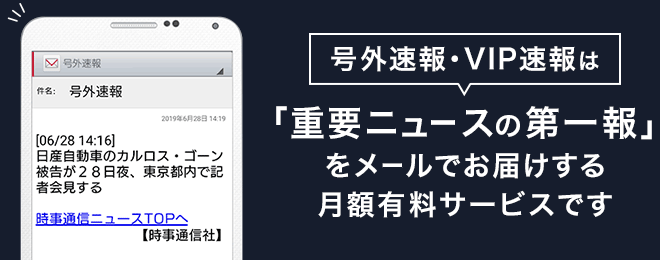使用済みロケットの月衝突、NASA観測へ 「刺激的な研究機会」
 【ワシントンAFP=時事】米航空宇宙局(NASA)は1月27日、宇宙開発企業スペースXの使用済みロケットが3月4日に月に衝突する見通しであることについて、「刺激的な研究機会」だとし、衝突で形成されるクレーターを調査する方針を明らかにした。(写真は月)
【ワシントンAFP=時事】米航空宇宙局(NASA)は1月27日、宇宙開発企業スペースXの使用済みロケットが3月4日に月に衝突する見通しであることについて、「刺激的な研究機会」だとし、衝突で形成されるクレーターを調査する方針を明らかにした。(写真は月)ロケットは2015年、NASAの深宇宙気候観測衛星「DSCOVR(ディスカバー)」を宇宙に運ぶ際に使われた。ロケットは2段式で、2段目が使用済みとなった後、宇宙空間を漂っていた。今年1月、月に接近した後、軌道が変わった。
NASAの報道官は「現在の軌道を進めば、2段目は2022年3月4日、月の裏側に衝突する見通しだ」とAFPに語った。
地球からは、衝突の様子をリアルタイムで見ることはできない。NASAの月周回探査衛星「ルナ・リコネサンス・オービター」も観測できる地点にはないが、衝突の前後を検証するための画像撮影に使われる可能性がある。
報道官は「(クレーターを見つけるのは)容易ではなく、数週間から数か月かかるかもしれない」と述べた。
衝突する2段目の重量は4トン、速度は時速9000キロと分かっており、形成されるクレーターや、衝突によって舞い上がる物質を研究すれば、月の研究に寄与するとみられる。
科学目的の意図的な月への衝突は過去に例があるが、偶発的な衝突が観測されるのは今回が初めてとなる。
天体の軌道を計算するソフトを開発した天文学者のビル・グレイ氏は、月への衝突は知見を深める機会になるとして、宇宙ごみは可能な限り月を目指すようにするべきだと提言している。【翻訳編集AFPBBNews】
〔AFP=時事〕(2022/02/02-11:45)
NASA aims to make observations from space junk collision with Moon

NASA said Thursday it aims to survey the crater formed when the remains of a SpaceX rocket are expected to crash into the Moon in early March, calling the event an exciting research opportunity.
The rocket was deployed in 2015 to put a NASA satellite into orbit and its second stage, or booster, has been floating in the cosmos ever since, a common fate for such pieces of space technology.
On its current trajectory, the second stage is expected to impact the far side of the Moon on March 4, 2022, a NASA spokeswoman told AFP.
The impact of the rocket chunk weighing four tons will not be visible from Earth in real time, nor will NASA's Lunar Reconnaissance Orbiter (LRO), which is currently orbiting the Moon, be in a position to observe the impact as it happens, the spokeswoman said.
The LRO could be used later, however, to capture images for before-and-after comparisons.
Finding the crater will be challenging and might take weeks to months, the spokeswoman said, adding that the unique event presents an exciting research opportunity.
Studying a crater formed by a hurtling object with a known mass and speed (it will be traveling at 9,000 kilometers per hour), as well as the material that the impact stirs up, could help advance selenology, or the scientific study of the moon.
Spacecraft have been intentionally crashed into the Moon before for scientific purposes, such as during the Apollo missions to test seismometers, but this is the first unintended collision to be detected.
Astronomer Bill Gray, creator of a software used to determine the trajectories of asteroids and other objects, was the first to calculate the booster's new collision course with the Moon.
He believes that space junk should always be directed towards the moon when possible: If it hits the moon, then we actually learn something from it, Gray said.

最新ニュース
-
都に生みの親の調査命じる=67年前の新生児取り違え―東京地裁
-
米送還移民の引き渡し提案=エルサルバドル大統領がベネズエラに
-
世耕氏、還流再開決定を否定=22年の旧安倍派幹部会合
-
錦織は64位=男子世界テニスランク
-
「情熱戻った」マルシャン=パリ五輪4冠、次は世界水泳―競泳
写真特集
-
ラリードライバー 篠塚建次郎
-
元祖“怪物” 巨人・江川卓投手
-
つば九郎 ヤクルトの球団マスコット
-
【野球】「サイ・ヤング賞右腕」トレバー・バウアー
-
【野球】イチローさん
-
【スノーボード男子】成田緑夢
-
【カーリング】藤沢五月
-
【高校通算140本塁打の強打者】佐々木麟太郎
















